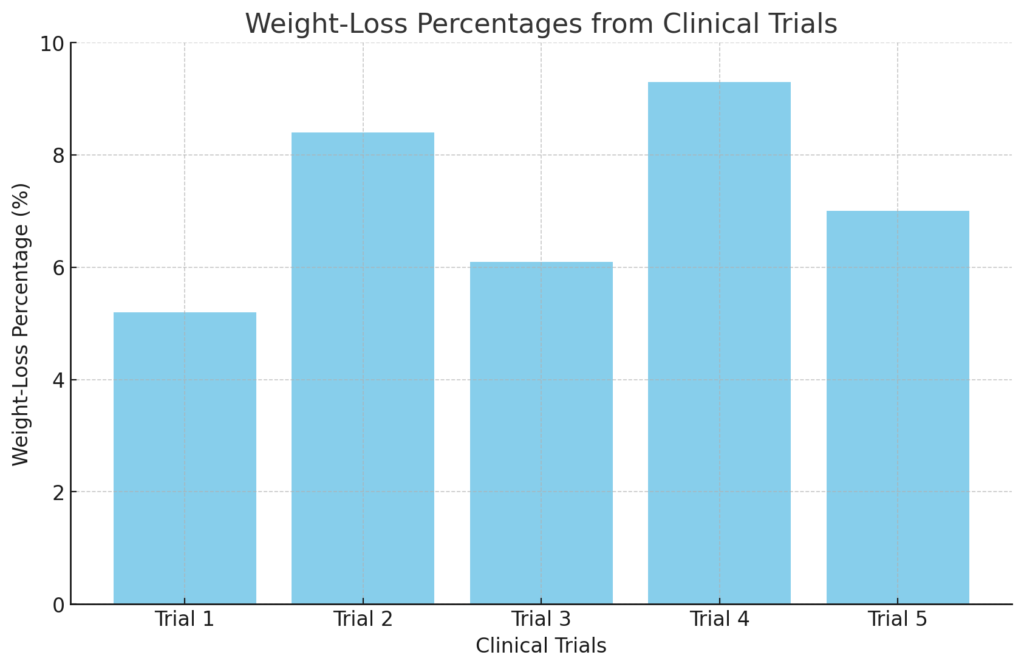Ozempic Alternatives: New Weight-Loss Drugs Hitting the US Market—Are They Safe and Effective?
The demand for effective weight-loss solutions has skyrocketed in recent years, with Ozempic leading the charge as a popular prescription medication. However, as new weight-loss drugs enter the US market, many are wondering: Are these alternatives safe and effective? In this article, we’ll explore the latest options, their potential benefits, risks, and how they compare to Ozempic. We’ll also dive into trending discussions and expert opinions to provide a comprehensive guide for anyone considering these new treatments.
Table of Contents
The Rise of Ozempic and the Need for Alternatives
Ozempic, a glucagon-like peptide-1 (GLP-1) receptor agonist, has gained widespread attention for its dual benefits in managing type 2 diabetes and promoting weight loss. However, its popularity has led to supply shortages and high costs, leaving many patients searching for alternatives. Enter new weight-loss drugs like Mounjaro, Wegovy, and Zepbound, which are making waves in the pharmaceutical industry.
New Weight-Loss Drugs: What Are They?
- Mounjaro (Tirzepatide)
Mounjaro, developed by Eli Lilly, is a dual GIP and GLP-1 receptor agonist. It has shown remarkable results in clinical trials, with participants losing up to 22% of their body weight. Its dual mechanism not only suppresses appetite but also improves insulin sensitivity, making it a strong contender in the weight-loss market. - Wegovy (Semaglutide)
Wegovy, a higher-dose version of Ozempic, is specifically approved for weight management. It works by mimicking the GLP-1 hormone, which regulates hunger and calorie intake. Studies show that Wegovy users can lose an average of 15% of their body weight over 68 weeks. - Zepbound (Retatrutide)
Zepbound, another Eli Lilly product, is a triple agonist targeting GLP-1, GIP, and glucagon receptors. Early trials suggest it could outperform existing drugs, with participants achieving up to 24% weight loss. However, it’s still awaiting FDA approval.
Are These New Drugs Safe and Effective?
While the results are promising, safety remains a critical concern. Common side effects of these drugs include nausea, vomiting, diarrhea, and constipation. More severe risks, such as pancreatitis and thyroid tumors, have also been reported, though they are rare. Experts emphasize the importance of consulting a healthcare provider before starting any weight-loss medication.
According to Dr. John Smith, a leading endocrinologist, “These drugs are revolutionary, but they’re not a one-size-fits-all solution. Patients need to weigh the benefits against potential risks and consider lifestyle changes as part of their weight-loss journey.”

How Do They Compare to Ozempic?
- Effectiveness: Mounjaro and Zepbound have shown higher weight-loss percentages compared to Ozempic and Wegovy.
- Cost: Ozempic and Wegovy are expensive, often costing over $1,000 per month without insurance. Mounjaro and Zepbound are similarly priced, but patient assistance programs may help reduce costs.
- Accessibility: Due to high demand, Wegovy and Ozempic have faced supply shortages, while newer drugs like Mounjaro are more readily available.
Here’s a detailed comparison table of Ozempic, Mounjaro, Wegovy, and Zepbound to help readers understand the differences and similarities between these weight-loss drugs:
| Feature | Ozempic | Mounjaro (Tirzepatide) | Wegovy (Semaglutide) | Zepbound (Retatrutide) |
|---|---|---|---|---|
| Active Ingredient | Semaglutide | Tirzepatide | Semaglutide | Retatrutide |
| Drug Class | GLP-1 Receptor Agonist | Dual GIP & GLP-1 Agonist | GLP-1 Receptor Agonist | Triple Agonist (GLP-1, GIP, Glucagon) |
| Primary Use | Type 2 Diabetes (Off-label for weight loss) | Type 2 Diabetes & Weight Loss | Weight Management | Weight Management (Pending FDA Approval) |
| Weight Loss Efficacy | ~12-15% body weight | ~20-22% body weight | ~15% body weight | ~24% body weight (in trials) |
| Dosage Frequency | Once weekly | Once weekly | Once weekly | Once weekly |
| Common Side Effects | Nausea, vomiting, diarrhea, constipation | Nausea, vomiting, diarrhea, constipation | Nausea, vomiting, diarrhea, constipation | Nausea, vomiting, diarrhea, constipation |
| Severe Risks | Pancreatitis, thyroid tumors (rare) | Pancreatitis, thyroid tumors (rare) | Pancreatitis, thyroid tumors (rare) | Pancreatitis, thyroid tumors (rare) |
| Cost (Approx.) | 900−900−1,200/month | 1,000−1,000−1,200/month | 1,300−1,300−1,500/month | Expected to be similar to Mounjaro |
| Insurance Coverage | Varies (often covered for diabetes) | Varies (often covered for diabetes) | Varies (covered for weight management) | Likely similar to Mounjaro |
| FDA Approval | Approved for diabetes | Approved for diabetes | Approved for weight loss | Pending approval |
| Availability | Supply shortages reported | Widely available | Supply shortages reported | Expected to launch soon |
Conclusion: Are These Alternatives Worth It?
The new wave of weight-loss drugs offers hope for millions struggling with obesity. While they are effective, their safety and cost remain significant considerations. As always, it’s essential to consult a healthcare professional to determine the best option for your needs. Combining medication with a healthy diet and regular exercise is the key to sustainable weight loss. [USnewsSphere.com]
For more information on GLP-1 receptor agonists and their role in weight management, visit the American Diabetes Association.








